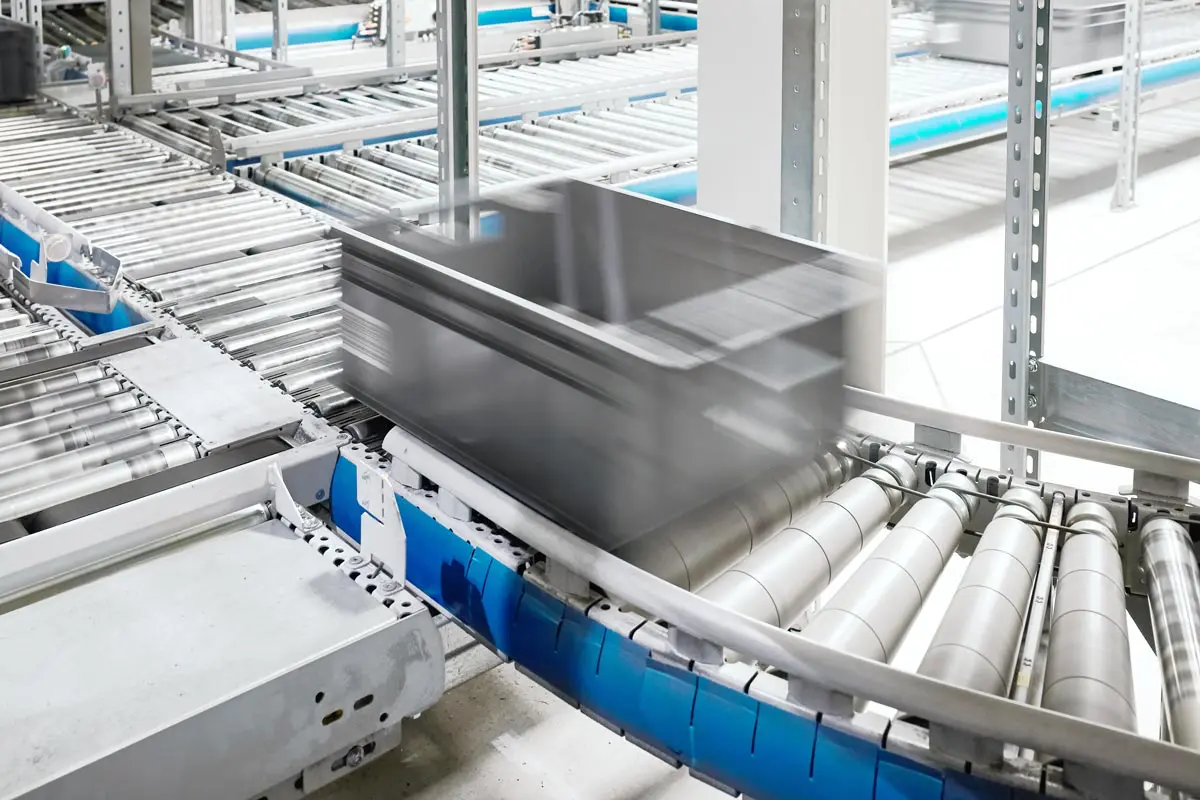Both the continuous conveyor and the discontinuous conveyor belong to the conveyor technology category. Both systems are used to transport goods from one place to another. They differ in that the continuous conveyor generates a constant transport stream, while the discontinuous conveyor only transports the goods at individual intervals.
Continuous conveyors
Roller, vibratory and circular conveyors are well-known examples of standard continuous conveyors. They are usually used for piece goods or bulk goods that are transported from one or more receiving points to one or more discharge points. Continuous conveyors run fully automatic and need not be operated by anyone. As this system runs continuously and without interruptions, it can transport relatively large quantities in a short time. The system is loaded and unloaded during operation. Therefore it is designed in such a way that it is prepared to receive and deliver at any time. The conveyor belt never stops running during the process. Thanks to its simple design and relatively low energy consumption in continuous operation, this system is used in various areas of intralogistics and is particularly efficient in large distribution centres. Mining, power plants and metal processing also benefit from this conveyor technology. A continuous conveyor is intended for long-term use as it is a fixed installation that cannot be easily moved to another position.
Furthermore, continuous conveyors are also included, for example:
- The spiral conveyor
- The fork conveyor
- The L-conveyor
- The S- or also Z-conveyor
Discontinuous conveyors
This area mainly includes forklifts, cranes and mobile transport systems, which are only used when a transport order exists. This necessity means that these systems may come to a prolonged standstill or be empty. In contrast to the continuous conveyor, the individual transport devices are controlled manually and have a loading and unloading phase that can be shorter or longer depending on the device and temporarily stops the transport. Unsteady conveyors are often rail- or floor-bound. Still, they can also move freely in some cases and are therefore more flexible than continuous conveyors, as they can be used spontaneously for other purposes. However, this also makes them more costly due to the personnel expenditure.
You can find more information under Decision Making for Unsteady Conveyors.
Image source: © Chlorophylle – Fotolia.com
Optimal utilization of your materials handling equipment and warehouse logistics
Our Material Flow Control system (MFC) calculates in real-time the best route of the goods through your heterogeneous materials handling and warehousing technology.

Also available in Deutsch (German)